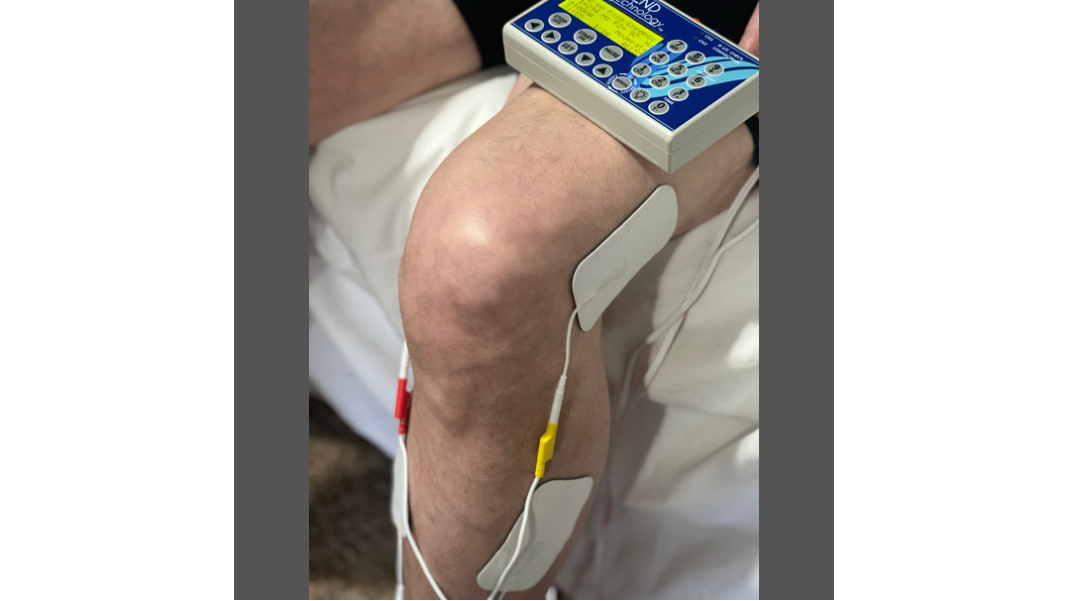Curious about Frequency Specific Microcurrent (FSM) treatments? Learn how FSM therapy effectively treats both acute and complex pain by targeting the neurological and myofascial aspects of discomfort.

Pain is a universal experience, but its management can be tricky, especially when it’s chronic or complicated. Traditional treatments like medication, physical therapy, and surgery often come with limitations, side effects, or lengthy recovery times. For people suffering from both acute injuries and persistent, complex pain conditions like fibromyalgia or myofascial pain, finding effective, non-invasive solutions can be a challenge. One promising therapy that has been gaining attention is
FSM is a revolutionary technique that utilizes low-level electrical currents at specific frequencies to promote healing at the cellular level. This approach, which falls under the umbrella of energy medicine, has shown great potential in reducing pain and inflammation, accelerating tissue repair, and improving overall healing. But what makes FSM stand out from other pain management therapies? And why is it proving to be particularly effective for both acute injuries and complex, long-term pain conditions?
At its core, FSM works by delivering microcurrent electrical impulses to targeted areas of the body. These low-level electrical currents mimic the body’s natural electrical energy, helping to restore balance and stimulate the body’s healing processes. Microcurrent therapy is completely non-invasive and generally considered safe, with no significant side effects.
The "frequency specific" aspect of FSM refers to the fact that different frequencies are used for different types of tissue and pain. For example, the frequency used for muscle tissue may differ from that used for nerve or bone tissue. By applying the right frequency for each specific tissue type, FSM optimizes healing and pain relief. The electrical currents stimulate the body at a cellular level, which helps to enhance circulation, reduce inflammation, and encourage tissue repair.
A significant body of research supports the efficacy of FSM in pain management. In particular, studies have shown that microcurrent therapy can help to alleviate pain and promote tissue repair for various musculoskeletal conditions. One of the key reasons FSM is so effective for pain management is its ability to target both neuropathic pain (pain caused by nerve damage or dysfunction) and myofascial pain (pain related to muscle tightness or injury).
Neuropathic pain is often a result of conditions like sciatica, nerve impingements, or complex regional pain syndrome (CRPS). These types of pain are notoriously difficult to treat with traditional therapies, as they involve the nerves, which are less responsive to standard anti-inflammatory or pain-relieving treatments. FSM, however, has been shown to modulate nerve activity and improve the flow of electrical impulses within the nervous system, helping to alleviate the discomfort associated with these conditions.
On the other hand, myofascial pain is a type of pain that involves muscle tightness, trigger points, or fascial restrictions, which can lead to discomfort, stiffness, and pain. Conditions like fibromyalgia and chronic back pain often have myofascial components. FSM is particularly effective for these types of pain because it helps relax muscles, reduce spasms, and increase blood flow, allowing the tissue to heal and recover more quickly.
Studies have shown that FSM is especially useful for treating fibromyalgia and chronic myofascial pain, both of which involve widespread pain and tenderness. FSM has been shown to help decrease pain levels and improve the overall quality of life for people living with these conditions.
Chronic pain conditions, such as fibromyalgia, chronic fatigue syndrome, or persistent back pain, are often difficult to treat because they involve multiple factors—nervous system dysfunction, inflammation, and muscle tightness. FSM’s ability to address these issues simultaneously makes it an effective solution for many patients. By targeting both the physical and neurological aspects of pain, FSM provides a holistic approach that addresses the root causes of discomfort rather than just masking the symptoms.
Moreover, FSM has been shown to enhance tissue repair and encourage cellular regeneration, which is particularly important for healing from long-term injuries or inflammation. The microcurrents stimulate the cells to produce ATP (adenosine triphosphate), the energy molecule that fuels the body's healing processes. This boosts the natural recovery process and accelerates healing, making FSM an effective treatment for both acute injuries and chronic pain.
For athletes and active individuals, pain due to injury is a common issue. Whether it’s from a sudden injury, overuse, or general wear and tear on the body, recovering quickly is essential to getting back into the game. FSM is a valuable tool for treating both acute injuries and long-term conditions resulting from physical activity.
FSM works particularly well for conditions like sprains, strains, tendinitis, and even post-surgery recovery. It reduces inflammation, alleviates pain, and promotes faster healing by increasing blood flow to the injured area. In fact, FSM has been used by many professional athletes and trainers to speed up recovery after an injury and to improve performance.
For athletes suffering from overuse injuries—common in sports like running, cycling, and tennis—FSM helps reduce inflammation in the affected muscles and tissues, allowing for faster recovery times and reducing the risk of developing chronic pain.
Practitioners who wish to incorporate FSM into their practices must first gain a solid understanding of the science and techniques involved. Frequencies that MEND offers a course titled “Foundations 1: Frequency Specific Microcurrent: Clinical Applications for Acute & Persistent Neuropathic, Myofascial, and Emotional Pain,” designed to provide practitioners with the knowledge and tools necessary to integrate FSM into their treatment plans. The 16-hour course provides in-depth training on FSM applications for various types of pain, how to evaluate patients neurologically, and which frequencies to use for different conditions.
If you are looking to enhance your clinical practice or find a solution for your own pain management, consider exploring the course offered by Frequencies that MEND to deepen your knowledge and application of Frequency Specific Microcurrent.
